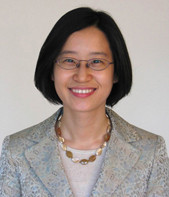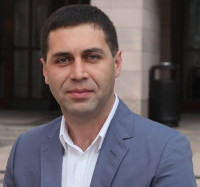Aging populations are currently a challenge to every healthcare system around the world. An older population translates into increased chronic and long-term care needs, which in turn translates into increased financial burden. For some countries, however, the socio-economic threat is more imminent than for others. This is the case for East Asian countries, where about one third of the world’s older population resides and where 15% of working-age adults will have disappeared by 2040. To ensure the sustainability of their healthcare systems, East Asian countries will need to adapt quickly and in line with their cultural, political, behavioural, and economical specificities. Focusing on South Korea, Taiwan, and Japan, Dr. Hongsoo Kim of Seoul National University aims to provide policymakers with a strong scientific basis for policy development and system change. Specifically, the objective of her project is to examine recent reforms in the field of aging health care systems (AHCS) and to examine the performance of AHCS in East Asian countries.
“Aging is at the top of the agenda for societies everywhere, but East Asian countries have a particularly fast-aging population, which entails specific challenges,” reports Dr. Kim. “In this sense, looking for examples of best practice in European and North American healthcare systems is not sufficient. The situation calls for solutions tailored to Asia’s context.” To provide policymakers with the necessary insight for the implementation of performant healthcare policies and system change, Dr. Kim chose to lead a comparative analysis of the best practices in East Asia, starting with three comparable healthcare systems. “Japan, Korea, and Taiwan all have social health insurance run by the government, but their ways of financing and organizing care are quite different. Comparing them and looking at system performance will provide new perspectives and evidence on the challenges Asian countries are facing and the recent policies implemented to respond to them,” the researcher explains. “The insights gained from the study will not only be useful for these three countries, but also for neighboring societies facing similar challenges.”
Comparing healthcare systems in Japan, Korea, and Taiwan
Dr. Kim will begin by looking at each country’s particular context, taking into account not just health-related factors but considering the big picture. “The aging phenomenon is embedded in and affects various aspects of our lives: not only health and well-being but also family, work, technology, and the broader social and cultural context,” she stresses. “They all need to be taken into account if a reliable comparison of healthcare systems is to be made.” Once the similarities and differences between the countries have been studied, the second step will be to analyze the healthcare systems and their performance, focusing on long-term and chronic care policies.
Ensuring sustainable, people-centered and high-quality healthcare systems in East Asia is the ultimate objective of Dr. Kim’s research. To achieve this, her project opts to provide governments and stakeholders with the evidence they need to implement tailored and performant health policy. “What we need is evidence and examples. Surely, there is no universal solution for all Asian countries, but their similarities are well-worth exploring,” the researcher says. With her comprehensive scope analysis of Asia’s long-term and chronic care systems, Dr. Kim will also provide the Asian research community with a novel framework, methods, and networks for the investigation of population aging, laying the grounds for further research to strengthen AHCS in other East Asian societies, including lower- and middle-income countries.



